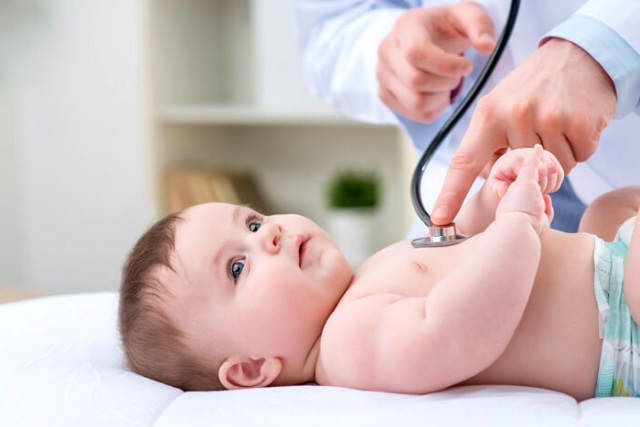A medical condition in which nerves outside the brain and spinal cord are affected is called Guillain barre syndrome. It causes paralysis and weakness but treatment recovery is there. It is a short-term and life-threatening condition.
In this article:
What is Guillain-Barre Syndrome?
Causes of Guillain-Barre Syndrome
Signs and Symptoms of GBS
Diagnosis of GBS
Treatment of GBS
Recovery from GBS
All You Need to Know about Guillain Barre Syndrome in Kids
What is Guillain-Barre Syndrome?
We all know that our immune system protects our body from foreign organisms which are harmful to us. But GBS is an autoimmune disorder in which the immune system of our body is unable to detect the body’s own cell and starts to attack own cells. There is no age bar for GBS but it becomes more common as age increases.
It is well known that peripheral nervous system includes nerves outside the brain and spinal cord. These nerves transmit the signals to the brain and also from the brain to the muscles. In GBS these peripheral nerves are damaged and due to this, there is a weakness, numbness, and tingling in arms and legs.
There are paralysis, pain, and weakness in the muscles of the chest, limbs and those which play role in swallowing. If this condition is not treated then it causes death because due to paralysis of chest muscles there is a problem in breathing. If treated can recover without any complications.
Causes of Guillain-Barre Syndrome
The exact cause of GBS is not known. It is estimated that it is an autoimmune disorder in which the immune system of the body destroys its own cells. GBS can occur after minor surgery, viral infection, bacterial infection and after any injury.
GBS can be triggered by a bacterial infection such as those that cause sore throat and diarrhea, but it doesn’t mean that each and every episode of sore throat and diarrhea leads to GBS.
Signs and Symptoms of GBS
Signs and symptoms of GBS are different in each child. The severity of symptoms increases after 2 weeks after the appearance of the first sign. The following are the symptoms of GBS in a child:
- Numbness in fingers and toes.
- A sensation of pain in fingers and toes.
- Weakness in legs.
- Difficulty in walking
- Problem in breathing due to paralysis of chest muscles
- Difficulty in swallowing
- Changes in vision
- Weakness in the face.
Recovery took more time if the nerve damage is more severe. Recovery may take several months to years.
Diagnosis of GBS
The following are the tests recommended for the diagnosis of GBS:
- Blood Tests: It is done to check infections. Smears are made and the cell count is done.
- Urine Tests: Mainly midstream urine is examined to check the infections.
- Lumbar Puncture or Spinal Tap: It is done to check infection or other problems. By doing lumbar puncture CSF (cerebrospinal fluid ) is aspirated and sent for testing. CSF is the fluid in which the brain lies so any infection or problem in the brain can easily be detected in CSF.
- EMG (Electromyogram) and Nerve Conduction Velocity Test: This test is done just to check the electrical activity of the nerves. All the abnormal electrical muscle activities are identified by EMG. This also detects how well the nerves are sending signals from one region to another.
- Lung Function Test: Pulmonary function test is done just to check the capacity of the lungs and to check how strong the respiratory muscles are. This helps a doctor to decide whether the child needs a ventilator or not.
Treatment of GBS
Treatment of GBS depends on the severity of the syndrome and also depends on the symptoms, age, and health. GBS is a self-limiting condition but is life-threatening. There is no specific and definite treatment for this. But the early detection of the early will be the recovery.
The main aim of the treatment is to correct the breathing problems and several medicines are given which can control the pain. The treatment is needed just to suppress the immune system or to reduce inflammation. This may include:
- Immunoglobulin Therapy: In this type of treatment immunoglobulins are given that reduces the attack of the immune system on the body’s own nerves.
- Plasmapheresis: This is a rarely used method because, in this treatment, the blood fluid is replaced by another fluid, by doing this the antibodies against own cells are removed.
Only one treatment is sufficient from the above two treatments. Before taking any decision firstly consult your child’s doctor about the benefits and side effects of all the treatments and then move forward.
As it is mentioned that in GBS there is difficulty in swallowing and there is paralysis so to some physical therapy is also advised which helps to regain the strength of the muscles and improves swallowing.
Regular visits to the doctor and proper care will help the child to recover fast.
Recovery from GBS
Patience is needed if a child wants to recover completely. Recovery may take months to years but the important thing is that most people recover eventually no matter how severe is the case.
Some people worry that GBS might come back. This is seen when symptoms during recovery are similar to those that are seen during GBS such as weakness, numbness, etc. But there is no need to worry because this may be due to lingering nerve trouble after the initial bout of GBS. A very small number of people develop GBS again.
Conclusion
GBS is an autoimmune disorder in which nerves are damaged. If detected early and treated then recovery is fast but it may also take some years.
References
https://www.ncbi.nlm.nih.gov/pmc/articles/PMC4576316/
https://www.urmc.rochester.edu/encyclopedia/content.aspx?contenttypeid=90&contentid=P02601https://www.urmc.rochester.edu/encyclopedia/content.aspx?contenttypeid=90&contentid=P02601
https://kidshealth.org/en/parents/gbs.html
Hope this article was of help for all our parents!! Please share your comments/queries/tips with us and help us create a world full of Happy and Healthy Babies!!
